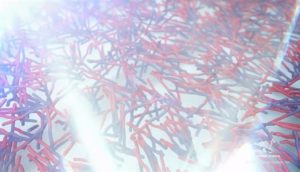
George Tulevski was a strong proponent of nanotechnology in graduate school, he fully invested his work in the science, and “drank all the Kool-aid.” Fifteen years later he saw nanotechnology development at a difficult place. The unending possibilities did not lead to disease-fighting nanobots, space elevators, or new computing methods. In his TED Talk The next step in nanotechnology Tulevski discusses his frustrations with nano progress and his ideas to develop the world of computing.
Innovation needs to be relentless, George says, to the point where one generation of technology is almost unrecognizable from the next. His group at IBM is tasked with using carbon nanotubes in the computing world. Early calculations say that if properly integrated the carbon nanotubes can give up to a ten time improvement in performance.
To deal with the problem the team had to step back and figure out the big problem that wasn’t being dealt with – how do you take a pile of dust and convince it to build itself into a new technology? Humans don’t build this way, but nature builds from the bottom up, and builds complex and diverse structures on a single molecule basis.
Tulevski’s solution was to bring chemistry in as a partner with engineering and nanotechnology. The chemistry allowed the IBM team to arrange billions of particles into circuits that are generations faster than current nanotechnology. George’s focus is on computing but there are applications in renewable energy, medicine, and structural materials as well.
George Tulevski is an engaging speaker using pop culture and a humorous delivery to push the idea that he’s moving computing nanotechnology forward. This talk is big on the problem statement – What do we do when we’ve been making computer chips smaller and denser for decades and they finally can’t get any smaller or any denser? – but the details about the solution are light and, I assume, proprietary. A quick Google Scholar search shows the impressive body of work that’s been amassed just by Tulevski’s group around carbon nanotubes. It will be exciting to see the progress made in the next five years.
Source: http://www.engineering.com/


















